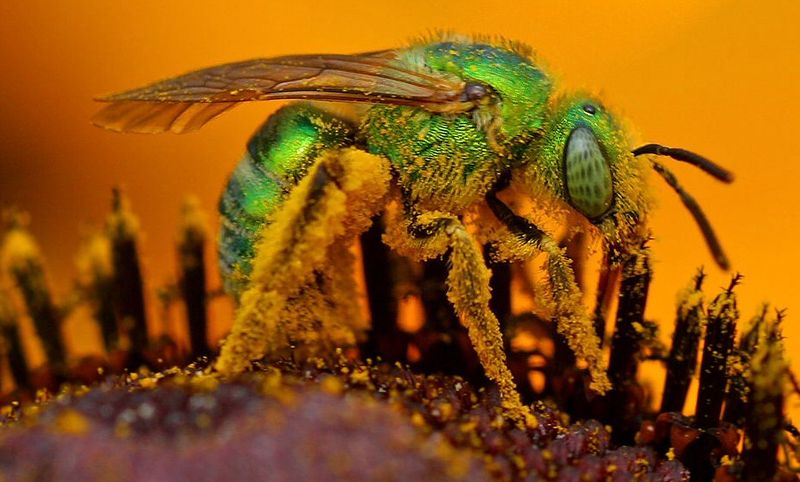Pollinator Week Part I: What are pollinators, and why are they important?
This week is National Pollinator Week; a week to draw attention to America’s diverse pollinator fauna. Pollinators are incredibly important, yet many species are imperiled by habitat loss, land use change, competition, disease, climate change, invasive species, and improperly applied insecticides.
A pollinator is any animal that transfers pollen from one flower to another. Pollen is the male reproductive… stuff… of plants, and many plants require animal assistance to get pollen from a male flower (or part of a flower) to a female flower (or part of a flower). Once a female flower (or flower part) receives pollen, it can produce fruit and seeds. A popular statistic is that approximately one third of all food consumed by humans requires animals (especially insects) for pollination. Without pollinators, producing those foods would become extremely difficult and expensive, if not impossible.
To illustrate a specific example, vanilla (Vanilla planifolia) has a very unique flower shape that can only be navigated for successful pollination by a single species of bee that is endemic to certain parts of Mexico. Vanilla itself is a hardy tropical plant that can be grown in consistently warm areas and greenhouses the world over. However, pure real vanilla extract remains a very expensive luxury because any vanilla grown outside of its pollinator’s range must be painstakingly hand-pollinated.
Photo credit for featured photo (Agapostemon spp.): Jon Sullivan, via Wikipedia.






